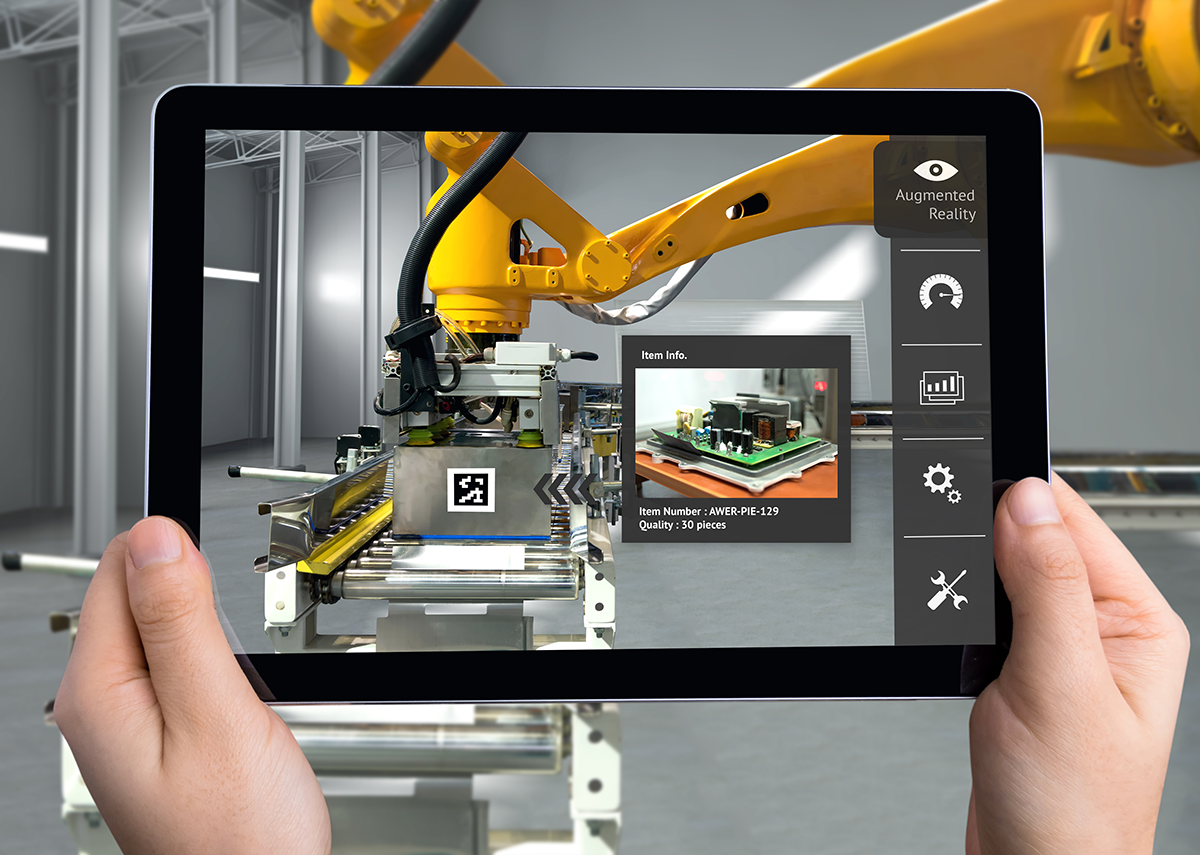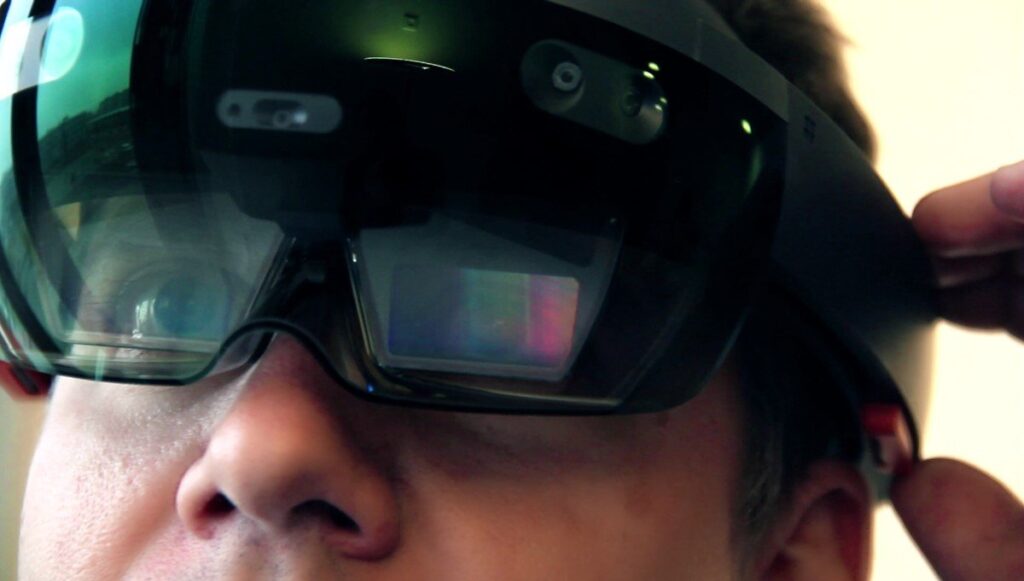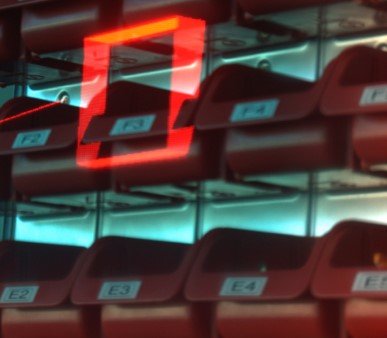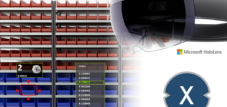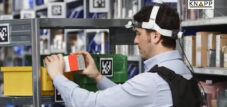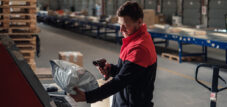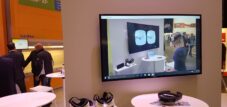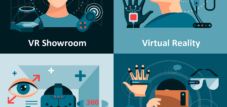Smart Picking – Smart picking
Language selection 📢
Published on: July 13, 2021 / update from: October 27, 2021 - Author: Konrad Wolfenstein
Robots and virtual reality in warehouse logistics
Robots have been omnipresent in the German economy for decades. So far, however, the area of application of mechanical helpers has been primarily in manufacturing and assembly, while they have mostly had a shadowy existence in logistics. With the advent of Industry 4.0 and increasing networking and automation in the warehouse, the era of robots is now beginning there too.
If you look at the use of robots in the warehouse, you will notice that they are usually only used to transport goods using driverless transport systems (AGVs). However, there are currently hardly any automated solutions in the area of storage and picking. However, in view of the rapid technical development and the advantages of automatic systems in terms of cost-effectiveness, speed and safety, the industry is now changing its thinking. More and more logistics companies can now imagine the future use of robot systems in storage and staging areas - or are already implementing this.
Suitable for:
This is also necessary because the logistics industry is facing major challenges in view of the already clearly noticeable shortage of skilled workers, which is fueled by demographic change, and the constant growth in throughput. To combat this, automated systems and autonomous picking make sense. While moving goods through a warehouse is relatively straightforward using conveyor belts or AGVs, picking is far more difficult to automate. According to statistics, the proportion of manual work here is still over 90 percent. This is because until now it has simply been too complicated to satisfactorily and cost-effectively replicate the human eye and hand, including their sense of touch, for a robotic solution.
Suitable for:
- Xtended: Extended Reality for business and industry
- Continuous improvements and further developments in extended reality
Another difficulty is that robots not only have to navigate safely in a warehouse, but also have to cope with constantly changing conditions. They have to avoid other systems independently and must also be able to grab items of various sizes at the control point or the picking station with precise piece accuracy. Since human workers cannot be completely dispensed with in the near future, they must also interact in human-robot cooperation without disturbing or even endangering the worker.
Gripping and detecting precisely – the two big problems of robots
Developers now have the complex software control under control, which is the basis for the coordinated movements of the robot gripper arms. A much bigger problem, however, is the feel of the goods themselves, which is primarily due to the heterogeneity of the range of items. The goods to be picked in a warehouse sometimes have large differences in terms of their shape, stiffness, strength, weight, volume and surface. In order to successfully process these articles, different techniques are used. But whether clamping, traction or vacuum grippers, not everyone can cover the entire range of items. Therefore, even more variable solutions are required to ensure that all goods can be removed reliably.
Another reason why picking automation with robots is difficult is the lack of flexibility in image processing by the automatic systems. Until now, it was simply too difficult for the devices to clearly identify the large number of different goods. Companies therefore resort to elaborately listing each item to be processed with its properties in terms of quality, weight and special handling instructions. A solution that may still make sense for a manageable inventory, but reaches its limits when the product range contains several hundred or even thousands of items. However, with a combination of 2D and 3D image processing, it is now possible for robots to no longer be so easily confused by the variety of goods and the identification of a wide variety of products and packaging, including staggered or slanted products, is a solvable task for them.
Maty , which has successfully automated the provision of its items, shows how this works The heart of the system is a software-controlled pick & place robot that fully automatically prepares pieces of jewelry and the corresponding cases for further picking. Compared to manual processing of orders, the output of ready-to-ship packages could be increased by 50 percent.
Smart Robotics palletizing technology: increasing productivity in pallet warehouses or palletizing systems
- High-bay warehouse consulting & planning: Automatic high-bay warehouse – optimize pallet warehouse fully automatically – warehouse optimization
- Buffer storage: For e-commerce, retail and manufacturing industries
- Warehouse optimization methods: Warehouse optimization with order picking: 5 steps to more productivity with optimized order picking
Semi-automatic solutions using virtual reality techniques
One step further are systems that support warehouse workers with picking. After data glasses have already found their way into logistics, another change is on the horizon with the use of virtual and mixed reality solutions. In contrast to the small displays of data glasses, with the HoloLens, no risk of the user's eyes tiring too quickly or problems such as headaches occurring. VR glasses have much larger and therefore more user-friendly displays, which also makes them possible to use for longer periods of time. Since the closed VR glasses hide the user's real environment, these systems are not suitable for regular use in logistics for the time being.
This problem does not occur with the semi-transparent HoloLens solution because the user still has their usual field of vision. In the warehouse, relevant information is provided depending on the location, time and perspective, which makes work considerably easier. In real use, the HoloLens recognizes the storage location of an item to be picked and always shows the order picker the optimal route there. When you arrive at the storage compartment, the correct container with the item to be removed is displayed using symbols. The item picked up is checked via a scanner module and immediately marked as processed in the electronic picking list. This increases both the speed of access and its precision.
Extended reality pioneering achievement with examined for picking processes in the warehouse. For this purpose, the data glasses were equipped with specially developed picking software, the user-friendliness of which will be tested and optimized during the project.
If successful, this innovative type of pick by view may well be able to replace classic methods in the future and build a bridge between manual work and automation in the warehouse. However, for regular use, improvements still need to be made in terms of weight and battery life of the devices.
With Xpert.Digital, get the know-how for warehouse optimization in combination with extended reality in the area of smart picking and smart order picking!
I would be happy to serve as your personal advisor.
You can contact me by filling out the contact form below or simply call me on +49 89 89 674 804 .
I'm looking forward to our joint project.
Xpert.Digital – Konrad Wolfenstein
Xpert.Digital is a hub for industry with a focus on digitalization, mechanical engineering, logistics/intralogistics and photovoltaics.
With our 360° business development solution, we support well-known companies from new business to after sales.
Market intelligence, smarketing, marketing automation, content development, PR, mail campaigns, personalized social media and lead nurturing are part of our digital tools.
You can find out more at: www.xpert.digital – www.xpert.solar – www.xpert.plus



